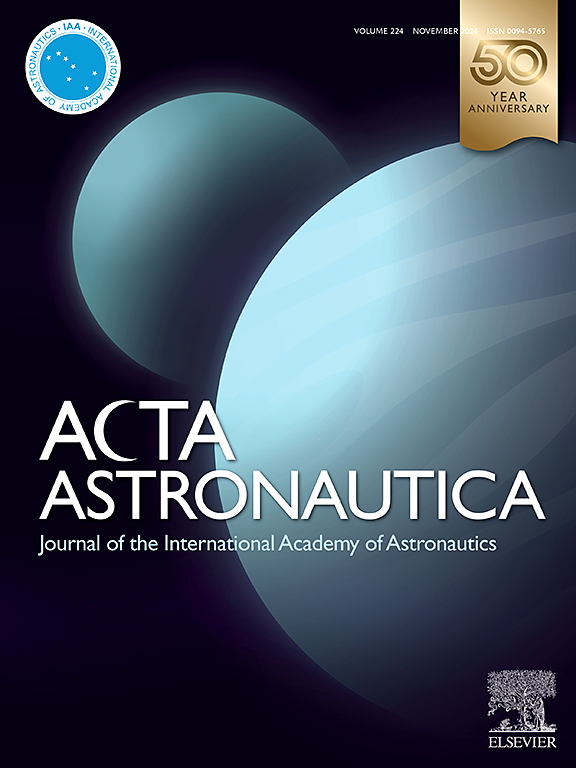Gird-search-based neural network modeling of piezoelectric hysteresis for gravitational wave inertial sensor
IF 3.1
2区 物理与天体物理
Q1 ENGINEERING, AEROSPACE
引用次数: 0
Abstract
The inertial sensor serves as the core payload for space-based gravitational wave detection, providing a stable inertial reference for observing mid-frequency and low-frequency gravitational waves in the universe and black holes. This paper designs a novel three-stage release mechanism for precisely releasing the test mass, namely the physical carrier of the inertial sensor. Due to the nonlinear hysteresis properties, modeling piezoelectric actuators plays an important role in ensuring low residual momentum. A neural network algorithm based on grid search-optimized multilayer perceptrons (MLP) is designed for the piezoelectric actuators used in the third-stage release mechanism. Meanwhile, an experimental setup is developed to acquire input and output data. The improved generalized Bouc-Wen (GB-W) and MLP models are used for parameter identification and model training. Experimental results indicate that the improved GB-W model achieves an error rate within 4%, while the MLP model optimized via grid search achieves a prediction error within 1%, demonstrating superior modeling performance. The MLP model offers a simpler yet more accurate approach, and its effective performance is verified through experiments with triangular and square wave signals across multiple frequencies.
求助全文
约1分钟内获得全文
求助全文
来源期刊

Acta Astronautica
工程技术-工程:宇航
CiteScore
7.20
自引率
22.90%
发文量
599
审稿时长
53 days
期刊介绍:
Acta Astronautica is sponsored by the International Academy of Astronautics. Content is based on original contributions in all fields of basic, engineering, life and social space sciences and of space technology related to:
The peaceful scientific exploration of space,
Its exploitation for human welfare and progress,
Conception, design, development and operation of space-borne and Earth-based systems,
In addition to regular issues, the journal publishes selected proceedings of the annual International Astronautical Congress (IAC), transactions of the IAA and special issues on topics of current interest, such as microgravity, space station technology, geostationary orbits, and space economics. Other subject areas include satellite technology, space transportation and communications, space energy, power and propulsion, astrodynamics, extraterrestrial intelligence and Earth observations.
 求助内容:
求助内容: 应助结果提醒方式:
应助结果提醒方式:


